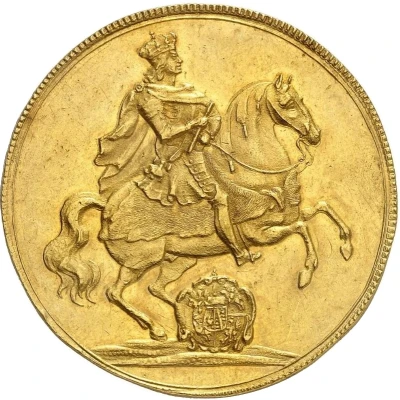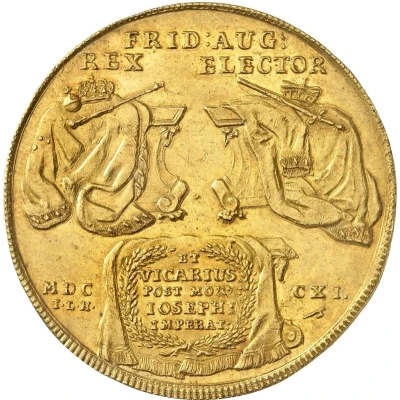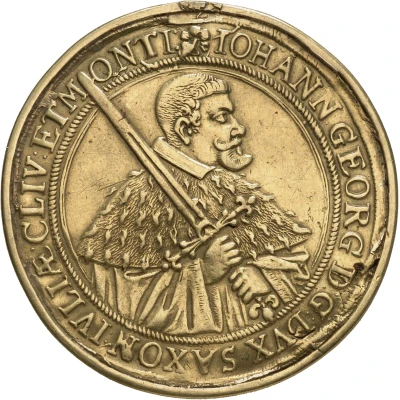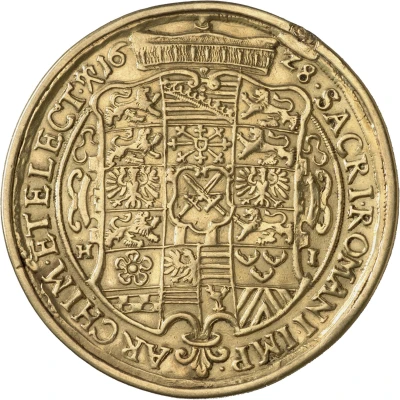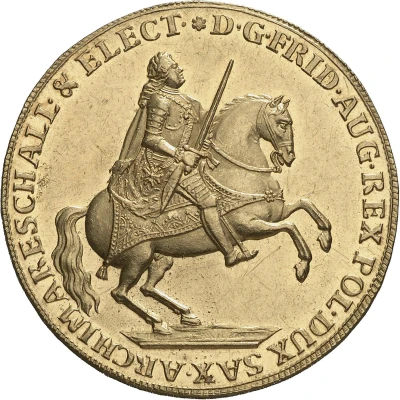
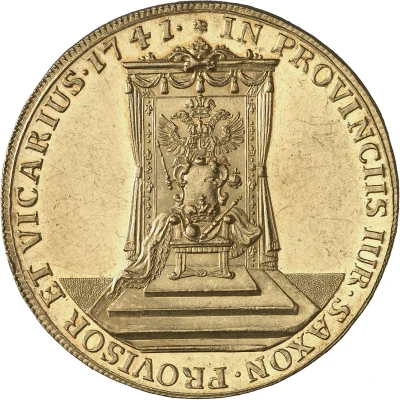

© Münzkabinett - Staatliche Museen zu Berlin (CC BY-SA 4.0)
10 Ducats - Frederick August II Vicariat
1741 year| Gold (.986) | 35 g | 41 mm |
| Issuer | Electorate of Saxony (Albertinian Line) (German States) |
|---|---|
| Prince elector | Frederick Augustus II (Friedrich August II) (1733-1763) |
| Type | Circulating commemorative coin |
| Year | 1741 |
| Value | 10 Ducats (10 Dukaten) (35) |
| Currency | Thaler (1493-1805) |
| Composition | Gold (.986) |
| Weight | 35 g |
| Diameter | 41 mm |
| Shape | Round |
| Technique | Milled |
| Demonetized | Yes |
| Updated | 2024-10-05 |
| Numista | N#355945 |
|---|---|
| Rarity index | 100% |
Reverse
Arms on tapestry back of throne.
Script: Latin
Lettering: IN PROVINCIIS IUR SAXON PROVISOR ET VICARIUS 1741
Comment
In 1740 Holy Roman Emperor Charles VI died resulting succession problem in HRE. Until Maria Theresa was accepted as new ruler of HRE Frederick August II ruled Saxony as deputy (vicarius) for emperor.
Interesting fact
One interesting fact about this coin is that it was minted during the reign of Frederick August II, who was the Elector of Saxony and King of Poland from 1733 to 1763. He was a member of the House of Wettin and ruled over a vast territory that included Saxony, Poland, and parts of present-day Germany and Ukraine. The coin was minted to commemorate his vicariat, or temporary rule, over the Electorate of Saxony, and it features an image of him on one side and the coat of arms of Saxony on the other. The coin's gold content and weight also make it a valuable and sought-after collector's item among numismatists.
